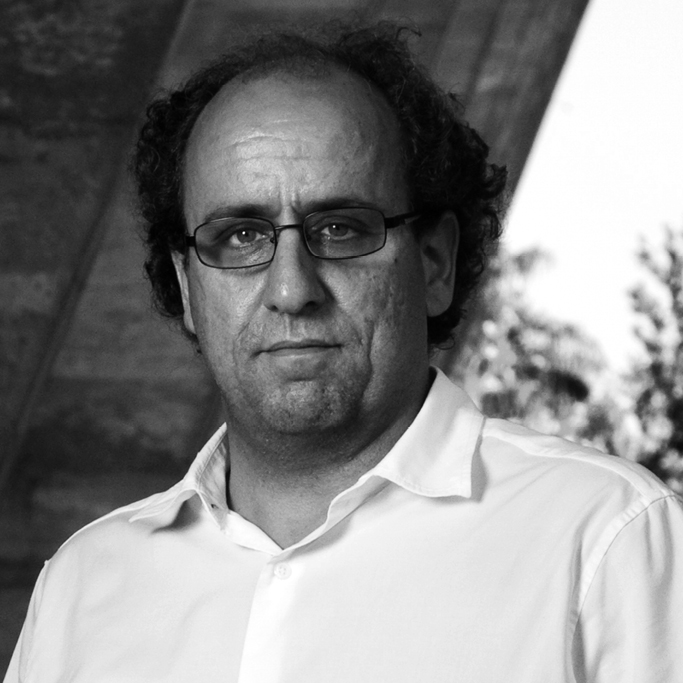Animal Traction
by Luiz Camillo Osorio
Animal Traction presents a collection of recent works by Raul Mourão. Sculpture has always been his trade, but images and the streets propelled the act of sculpturing, with its concern for volume and gravity, toward the flow of live. To clandestinely and silently spread iron structures throughout the city guarding and enveloping the trunk of trees, or to hook some friend artists on the walls of the Sergio Porto gallery were initial movements of the artist, answering to a call to contaminate circuits and to invert expectations in relation to the spaces of art creation and reception. From these initial gestures including the later incorporation of traffic signs, symbols and references of daily life, three elements articulate his poetics: geometry, eloquence and humor. Not necessarily the three of them are present in each work, but at least two of these qualities are always present.
Geometry implies a commitment with structural simplicity. Eloquence points toward an always present and direct presence of form. Humor functions as a seasoning that allows the emergence of a wave of intelligence, breaking with geometrical austerity and preventing a too immediate communication.
The modular structures employed in scaffolds are rigid and utilitarian in their everyday tasks. In Mourão’s swings, however, they are overwhelmed by movement, by a playful articulation and by the amusement of being useful only to a disarmed regard. To set them in motion depends on a gesture by the visitor. Once in movement, they swing according to different rhythms. Some more agitated and tense, other more insinuating and sensual; some slower and some briefer. All of them, however, producing together a choreography to be admired by the visitor, who sees the outer landscape through their hollow spaces, who notice the movement of trees and cars piercing the movement of the pieces. Itís not the case to stop and just observe. In my view, these pieces invite the spectator to move. The spectatorís body joins an interesting synergy with the sculptures. A body swings the other, a body depends on the other; as in soccer, who is found in the move has preference.
The plastic and visual presence of the world enters his work not as a theme, but as energy that permeates the creative process, unfolding the curious regard into kinetic structures, rhythmic planes, dancing shadows. The movement of the swings is displaced to the vertical levels of the elevator and from there to the mysterious drawing of light and shadow.
If, despite the physical presence of small sculptures, there is a somewhat magical enchantment in the room of shadows, that surprises the spectator and leads him/her to a quite dreamy and illusory plane, in the video, despite the mediumís virtuality, prevails the materiality insinuated between the planes of light, shadow and concrete. One takes us to the dream, while the other takes us to the city. Such play between dream and city permeates Raulís poetics since the beginning and invites us to an unconditioning of perceptions. Things may be perceived without a functional determination, without a defined prescription by any kind of need.
Such is the freedom of an aesthetic regard that allows itself to be seduced by the mere appearance of phenomena, by the simultaneity and singularity of sensible data of that which is happening. The open camera attentive to the slow movement of the elevator is available to change and to the mere fruition of whether presents itself in each passage of light.
This is a looping exhibition; everything comes and goes in swing: from the physical to the virtual, from body to light, from light to shadow. In this continuous movement, a kind of visual mantra, that which becomes explicit is the capacity of aesthetical enchantment of his work ñ the power of capturing and activating our perception before the appearance of things. Surprise in its whole disarmed contingency.
